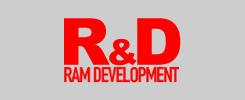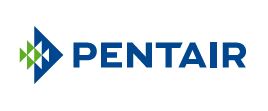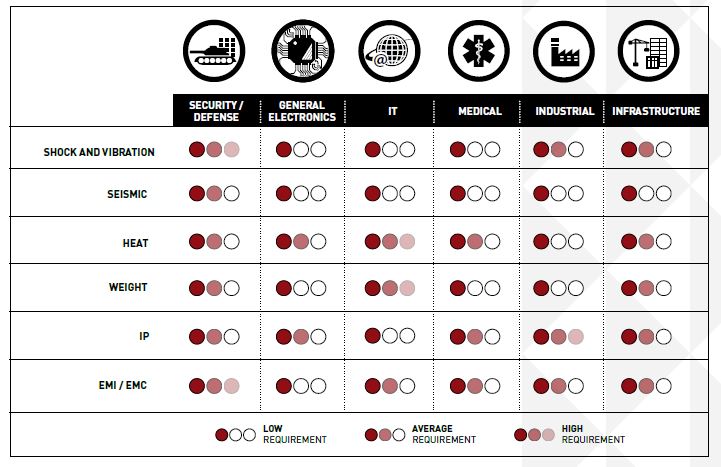7 Essential Cabinet Design Considerations for Protecting 19” Electronics
Depending on the application, choosing
the right cabinet might be a challenge.
Outside the traditional 19”data
communications and
telecommunications market, cabinets
may be exposed to extreme heat, high
dust/contaminants, clean room/
laboratories, Radio-Frequency/
Electromagnetic interference (RFI/EMI)
and high shock and vibration
requirements. To help choose a specific
19” electronics cabinet solution this
article introduces seven essential design
considerations.
ONE – Design Standards
Depending on your requirements different
design standards can apply. Those are
defined and developed by standards
committees, government agencies, and
regulators. Standards result from
technical agreements related to design
specifications and requirements that need
to be fulfilled by a product or service.
Some key design standards associated
with electronics cabinets include the
following:
IEC
International Electrotechnical Commission
(IEC) develops International standards for
all electrical, electronic and related
technologies. Adoption is voluntary,
although they are often referenced in
national laws or regulations worldwide.
IEC 60297 (Mechanical structures for
electronic equipment – Dimensions of
mechanical structures of the 482,6 mm
(19 in) series) standard provides crucial
information for designing 19” cabinets –
IEC 60297; IEC 60297-3-100 (19 inch
Standard); IEC 60917-2-2 (25 mm metric
Standard); ETS 300 119-2/-3 (European
Telecommunication Standard).
RoHS Compliance
Restriction of Hazardous Substances.
(RoHS), originated in the European
Union and restricts the use of six
hazardous materials found in electrical
and electronic products.
MIL-S-901D is a
special militar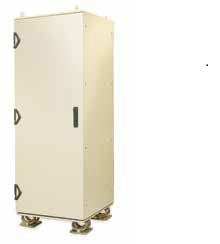 y
y
test requirement
designed for
shipboard
applications.
Based on the
type of
equipment
– essential or
non-essential to
the safety and
combatreadiness
of the
ship –
qualification
testing is performed on a specified
machine placed on a barge floating in a
pond where explosive charges are
detonated at various distances and
depths in the pond to impart shock upon
the equipment.
TWO – Cabinet Dimensions
19” cabinets provide a standardized
frame or enclosure for mounting various
types of electronics equipment. Each
piece of equipment is typically 19 inches
(482.6 mm) wide, including edges or
mounting ears, which allow for mounting
to the rack frame. Cabinet height is
defined in “Units” (U), each unit equals
an industry standard of 1.75 inches
(44.45 mm). Rack-mountable equipment
is usually designed to occupy a specified
number of U. Cabinet depths may vary in
accordance with diverse applications.
Typical depths range 600-1200 mm.
Detailed guidance regarding mechanical
structure standards for 19-inch
electronics may be referenced in IEC
60297-3-100.
THREE – Weight Load Capacity
The amount of weight loaded into a
cabinet can vary widely, so it’s important
to take a look at this factor to determine
the right type of cabinet for a given
application. Whether it is several banks
of batteries for uninterruptible power
supplies, or an array of hard drives,
proprietary equipment or other heavy
components, underestimation of weight
loading requirements is a very common
frustration for engineers. It is especially
Experts from
around the world
collaborate
and de velop IEC
International
Standards – more
information may be
found on the IEC
website.
7 Essential Cabinet Design Considerations for Protecting 19” Electronics
difficult because some tests may be
conducted to ensure optimal results,
such as mounting the heaviest
equipment at the bottom of the cabinet,
but it may not correspond to the layout
for the final application.
Working with heavy loads can also
present other issues. Depending on the
application, some cabinet designs may
require dynamic protection, which in
turn, necessitates a more robust design
depending on the load.
FOUR – Thermal Management
and Cooling
Thermal management is an important
design consideration for any electrical or
electronics enclosure. Thermal overload
can be a common reason for operating
failures in electronic devices, and the
risk increases for equipment mounted
into cabinets as power density of today’s
electronics increases, and more heat is
generated. Heat dissipation calculations
are measured in ΔT (Delta T), which is
defined as the temperature difference
between the intake air and exhaust air,
or the amount of heat that is carried
away by the stream of air exiting the
heat load. A greater temperature
difference signifies more heat being
removed.
Cabinets designed for universal
applications require broad thermal
management compatibility and often
need to meet more stringent
performance demands than standard
communications cabinets. There are
numerous thermal management and
cooling options that may be deployed in
cabinets – from high perforation—which
is referred to as a passive option—to fan
trays, heat exchangers and air
conditioners—which are considered
active options.
A greater
temperature
difference signifies
more heat being
removed.
Additional information regarding heat
management design standards and
recommendations are defined in IEC
61587-1.
FIVE – Shock & Vibration Protection
There are two main dynamic
requirements – seismic and shock/
vibration (S/V) tests. It is worth
pointing out that S/V and seismic tests
are very different and have very
well-defined processes on loading
cabinets with weight. Retesting with
exact equipment is needed to ensure
that the final solution offers the same
S/V or seismic protection as desired.
The test may not be needed if the
equipment is below the threshold of
the official test.
Shock and Vibration
This test is a go-to test for equipment
that will be used in mobile
applications and simulates a typical
environment in a train car, vehicle or
next to vibration-generating
equipment such as a punch press or
other piece of industrial equipment.
Minimization of weight and S/Voptimized
designs offer long-term
benefits to users, especially in
transportation applications.
Seismic
Seismic activity is a
very complicated,
but well-studied
phenomenon.
Testing equipment
and processes are
well-defined and
well-known with
multiple labs
capable of doing
tests. The test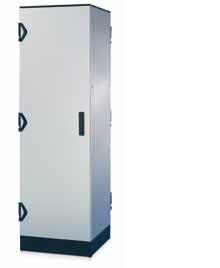
consists of placing a
fully loaded,
standard cabinet on
a platform that can
move in any
direction and
simulate the earth’s movements
during a seismic event. Certain
deformation and movement of the
cabinet can lead to test failure.
SIX – Electromagnetic Compatibility (EMC)
Electromagnetic interference (EMI) has
been a growing concern with equipment
manufacturers. As equipment becomes
faster and proliferates into all types of
manufacturing and production
environments the issue of EMI has
become more prevalent. Environments
that were once considered EMI-free are
becoming more and more susceptible to
interference due to an increase in
automation equipment and electronics
emissions. Visual inspection alone of
cabinet gaskets does not suffice to
ensure adequate EMI protection.
Proper tests and results are needed to
ensure that a cabinet design meets
those requirements. Gasket integration
to provide a Faraday effect is not a
simple matter – competing with
requirements such as cabinet cooling
and perforations for air flow. The latter
demands an understanding of the entire
system, not just individual components,
and necessitates a number of
accessories that may seem redundant
but solve very specific problems.
Additional design requirements and
recommendations can be referenced in
IEC 61587-3.
SEVEN – Environmental & Safety
IEC 60529 provides guidance for
classifying the ingress protection rating
(IP Codes) of enclosures. IP deals with
dust and water protection. Equipment
that has better protection against dust/
objects and water will have higher
ratings. IP ratings have two numbers –
one shows dust/object protection and
the other shows water protection.
There are some industries where the
requirement might be higher than in
others – transportation, military and
food and beverage industries are just a
few that might have high requirements
for IP rating due to the nature of the
intended applications as compared to
other industries. It is beneficial to
partner with a supplier that has a solid
understanding of the various
requirements, has built various types of
IP cabinets and can show test reports.
7 Essential Cabinet Design Considerations for Protecting 19” Electronics
CONCLUSION
When designing 19” electronics
enclosures outside of traditional data
and telecommunications applications,
it is critical to partner with a provider
who has a demonstrated history of
working within stringent global design
standards, and is able to work with you
to provide the right cabinet solution that
meets the performance requirements of
the entire system. Schroff, a division of
Pentair Technical Solutions, is a global
leader in electronics protection, and
offers high-quality electronic packaging
design and fabrication including
complete systems,
individual
packaging solutions
and demanding
customized solutions.
About Pentair Technical Solutions
Pentair Technical Solutions is a global
leader of systems and solutions that
safeguard industrial controls, electrical
components, communications
hardware, electronic devices, and
electrical heat management systems.
Its premier brands Hoffman, Raychem,
Schroff and Tracer provide a
comprehensive range of standard,
modified and custom engineered
solutions for the energy, industrial,
infrastructure, commercial,
communications, medical, security and
defense markets.
The Schroff brand contains a broad
portfolio of products from printed circuit
board (PCB) accessories, such as card
retainers, conduction cooled frames, front
panels and handles to subracks, cases,
backplanes, power supplies, cabinets and
pre-assembled chassis for embedded
computing systems For more information,
visit www.pentairprotect.com
About Pentair plc
Pentair plc (www.pentair.com) delivers
industry-leading products, services and
solutions for its customers’ diverse
needs in water and other fluids, thermal
management and equipment protection.
With 2014 revenues of $7.0 billion,
Pentair employs approximately 30,000
people worldwide.
All Pentair brands and logos are the
property of Pentair or its affiliated
companies worldwide. Pentair reserves
the right to change information without
prior notification.
